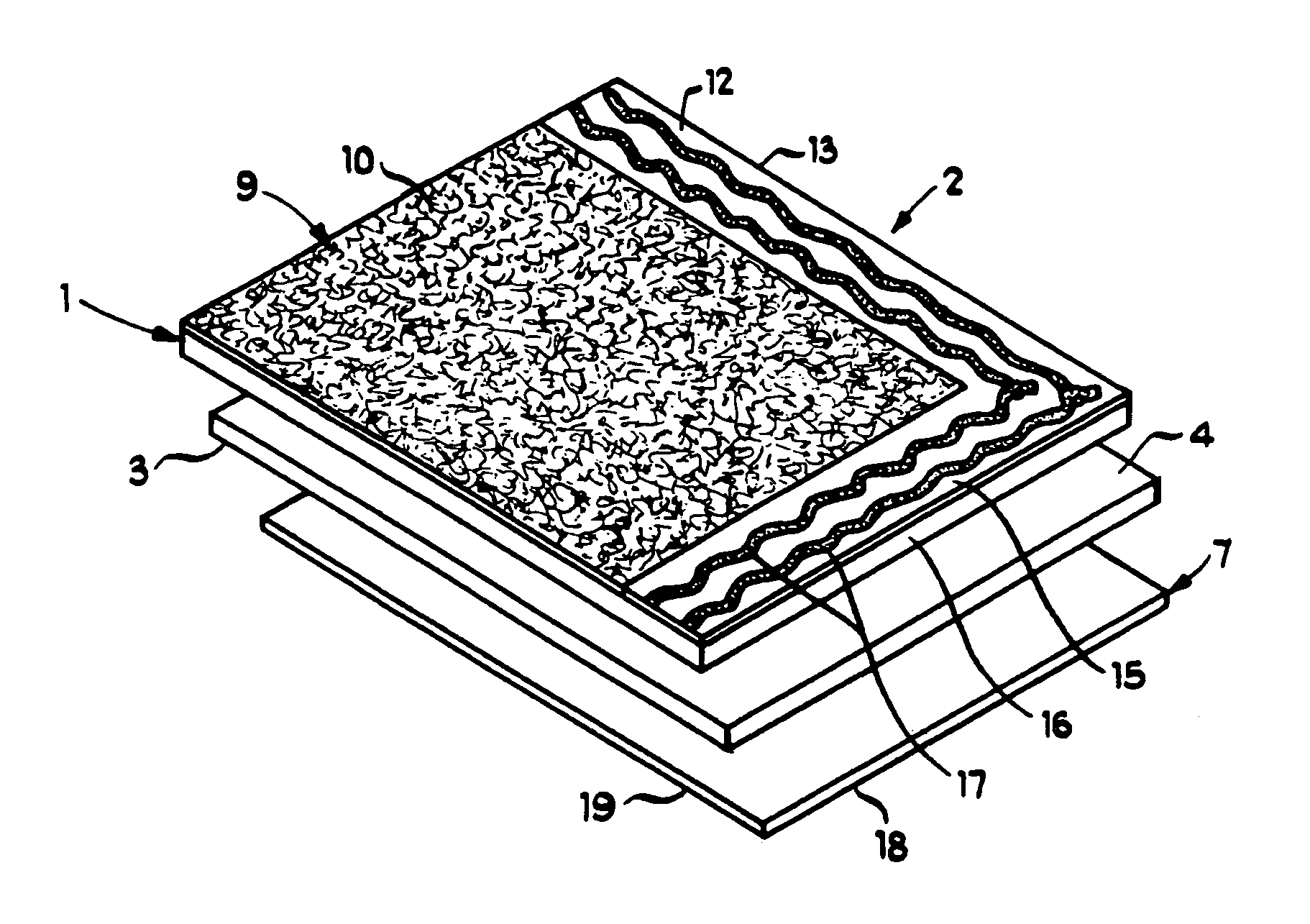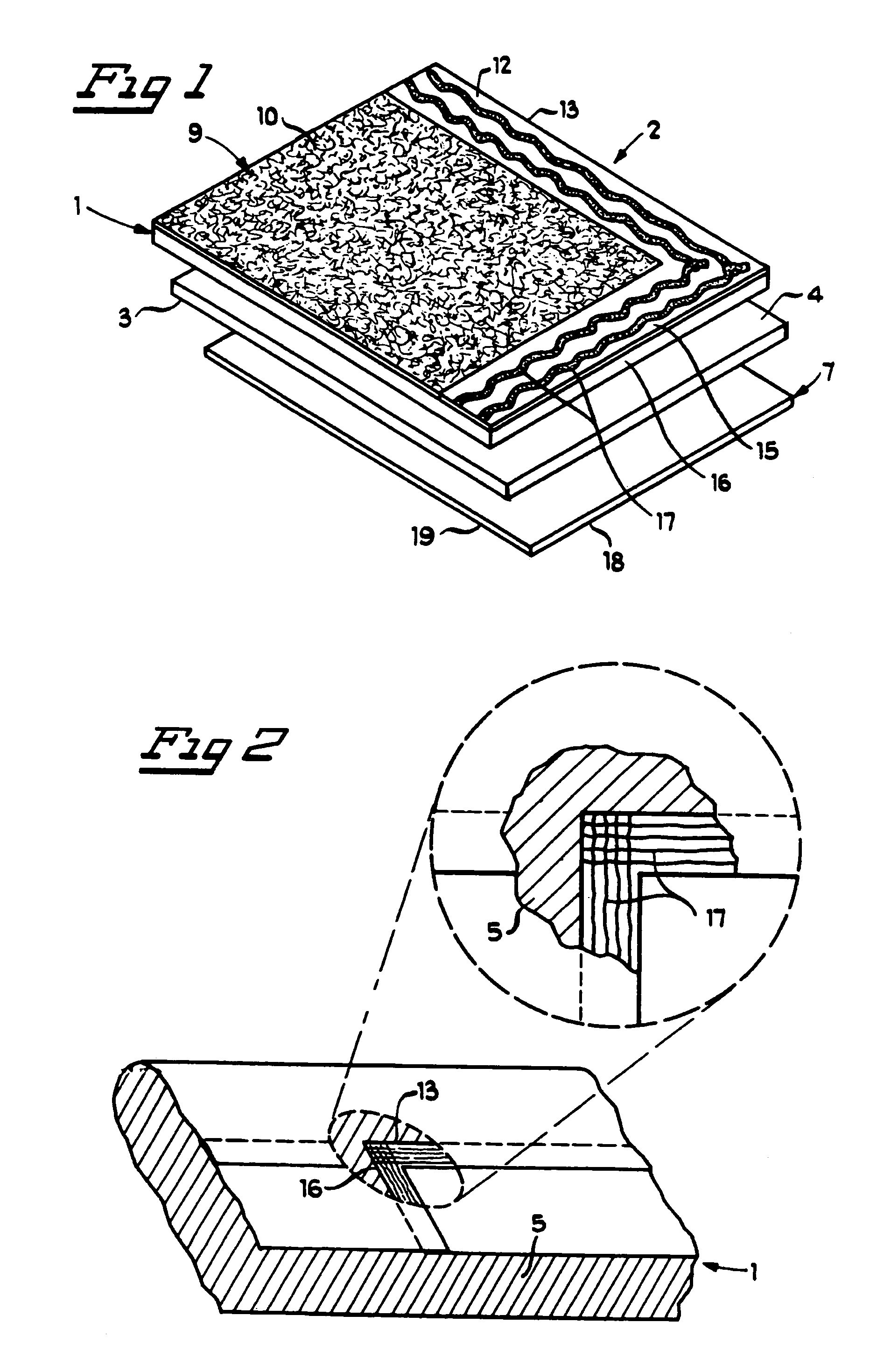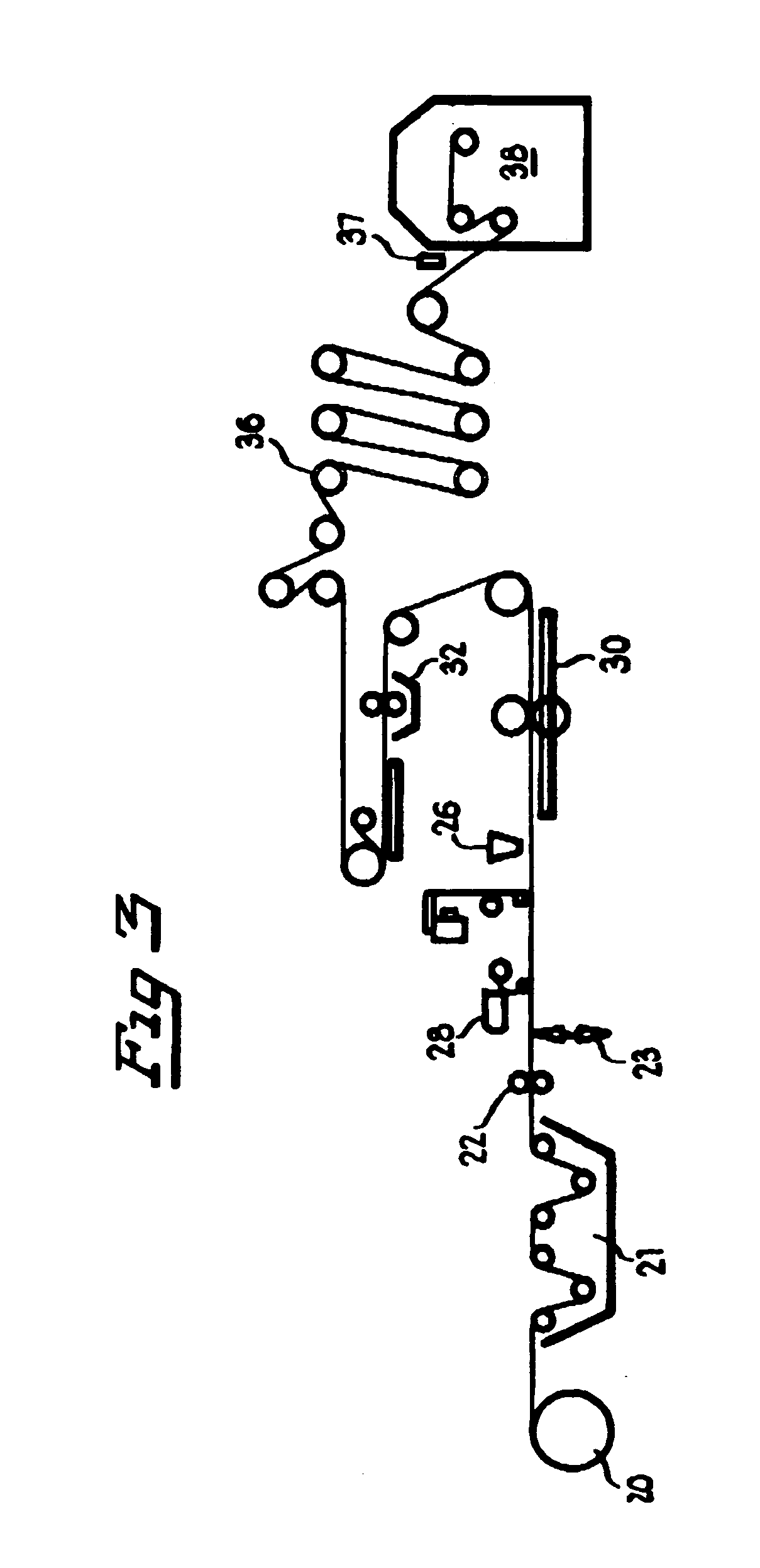Self-adhering modified bitumen underlayment for metal roofs
a technology of metal roofs and underlayments, applied in the direction of roads, instruments, traffic signals, etc., can solve the problems of shrinkage of felts, increased price of felts over the years, and no longer used, and achieve the effect of low strength and high tear strength
- Summary
- Abstract
- Description
- Claims
- Application Information
AI Technical Summary
Benefits of technology
Problems solved by technology
Method used
Image
Examples
Embodiment Construction
[0026]In one preferred embodiment, the metal underlayment material is a dual compound composition constructed of a first APP modified asphaltic layer on the front side of the carrier sheet and a second self-adhesive asphaltic layer on the back side of the carrier sheet. The second asphaltic layer is very adherent and provides excellent adhesion of the membrane to the underlying surface.
[0027]Referring now to the drawings, FIG. 1 represents a bituminous self-adhesive metal underlayment material constructed in accordance with the present invention and is shown in an exploded view. The composite sheet 2 is made with modified asphalt coatings and a reinforcing carrier sheet 4. Specifically, composite sheet 2 includes a reinforcing carrier 4 sandwiched between top and bottom layers, 1 and 7, respectively, of modified bitumen coatings, which form oppositely exposed upper and lower surfaces, 9 and 18, respectively, of the composite sheet 2. The bottom layer 7 has an adhesive polymer-modifi...
PUM
| Property | Measurement | Unit |
|---|---|---|
| Length | aaaaa | aaaaa |
| Length | aaaaa | aaaaa |
| Length | aaaaa | aaaaa |
Abstract
Description
Claims
Application Information
 Login to View More
Login to View More - R&D
- Intellectual Property
- Life Sciences
- Materials
- Tech Scout
- Unparalleled Data Quality
- Higher Quality Content
- 60% Fewer Hallucinations
Browse by: Latest US Patents, China's latest patents, Technical Efficacy Thesaurus, Application Domain, Technology Topic, Popular Technical Reports.
© 2025 PatSnap. All rights reserved.Legal|Privacy policy|Modern Slavery Act Transparency Statement|Sitemap|About US| Contact US: help@patsnap.com



